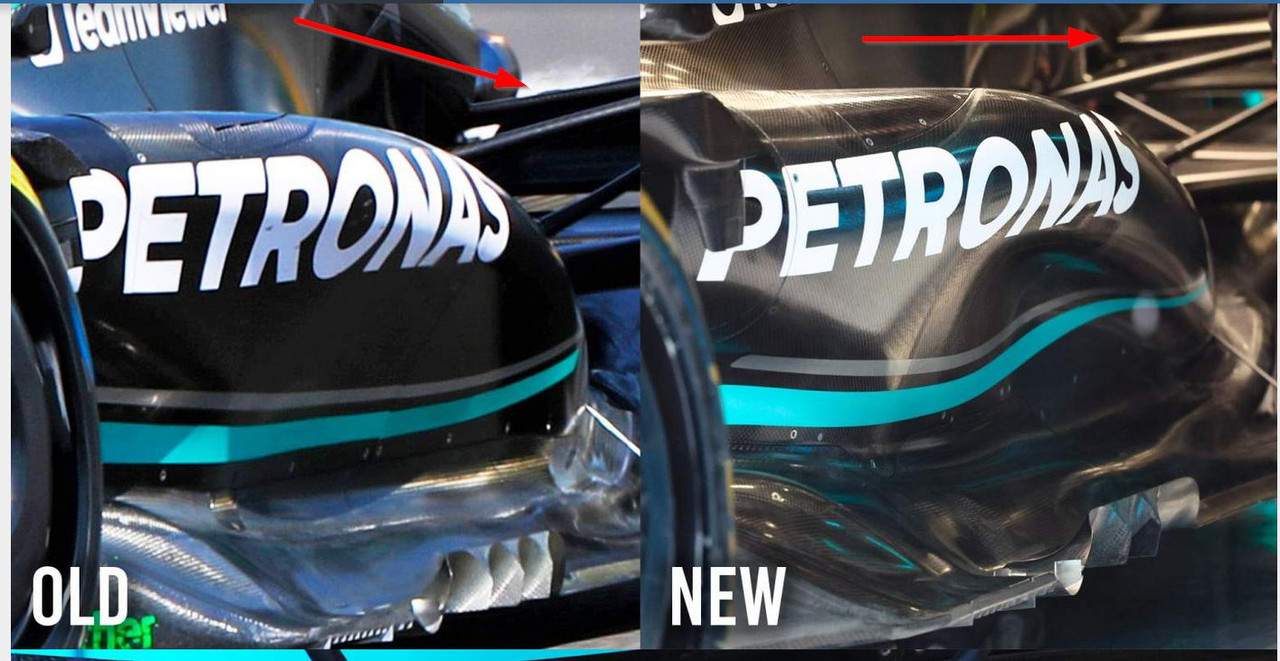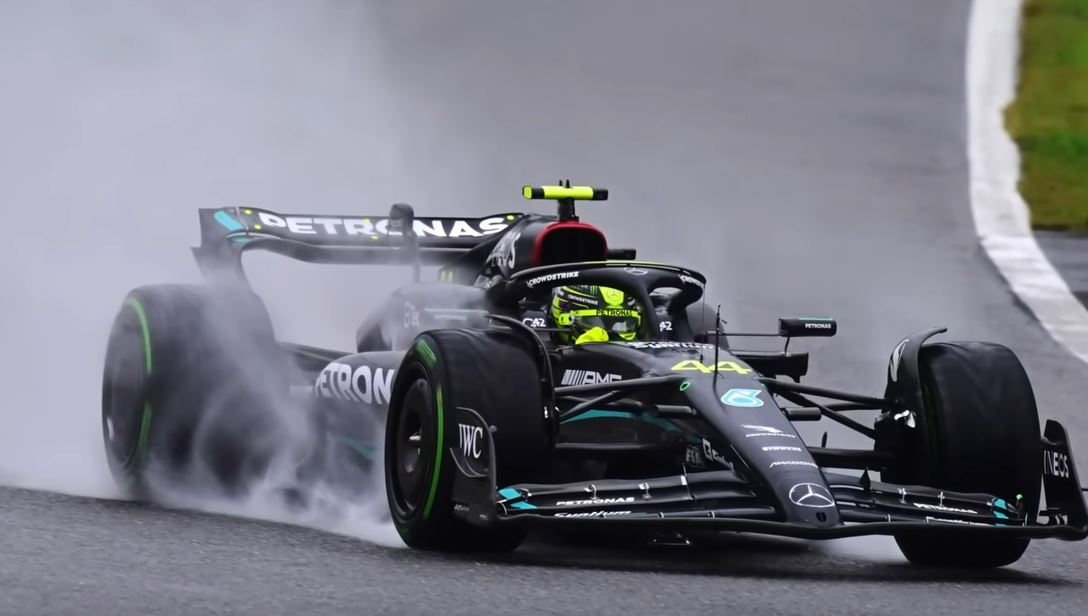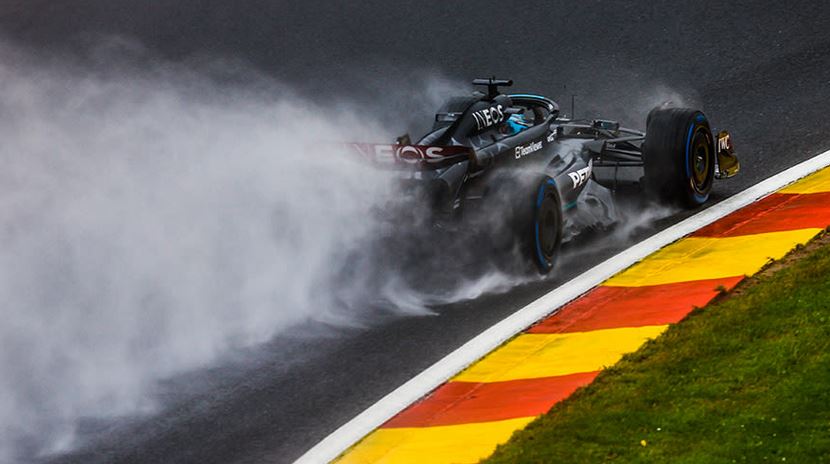A very interesting weekend to see how the development placed this chassis against the others, especially so on this circuit with such a split in load demands vs drag.
Looks like these sidepod rear lower design are effective in raising diffuser effective range of operation. Notable is the rear, in front of tyre, treatment that appears to make more focused supply of air volume and pace to the outside wall of diffuser.
The floor load appears to have gone upward, in spite of running a low loaded rear wing. A good step in analysis terms, an overall gain but difficult to use it fully reinforced by overall pace observations.
The "bouncing" note that nobody in MB world wants to say the "P" word ? shows how close they are to running into problems. That does or should tell the aero team something very important though, seeing where that margin is helps to define the path of understanding, that's valuable significantly so if the results are properly examined.
Notice though a similarity to Imola 22 (I still think one of the worst display of bouncing) low altitude, water heavy air density etc etc, and think this is vital to their picture.
Put more floor load on the chassis via increases in diffuser effort and it starts to pull the chassis into that pitch cycle we can all see.
This I believe is compounded by the mid wing effect (there's more lift accumulated in dense air) generating more lift, it is true Porpoising (there, I've said it

) lift the front end with tail down attitude/load range increase, then the chassis will effectively produce a "swallowing" routine with the pressure wave passing under the car to force that characteristic frequency in load max, load minimum etc until the speed drops again.
None of them are far from this threshold, the top entry sidepod seems to be furthest away from running into the flow like this, but just sufficiently to keep it from generating a wave response that is very difficult to control.






